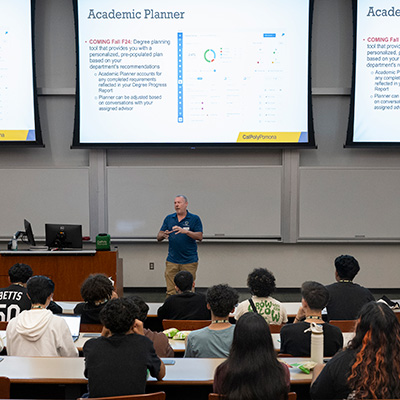Classroom Help


Everything you need to know
Learn About Your Classroom
This page is dedicated to providing Cal Poly Pomona faculty a singular area for learning about the different instruction spaces across the campus and leveraging the technology found within them to their fullest extent. From simple projector issues to complete guides on utilizing technology within your particular pedagogy, everything can be found here!

Learning Pathways
Select an area to explore
These sections offer insights into the different aspects of classrooms that will be relevant throughout the campus.